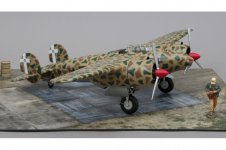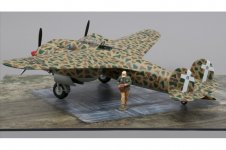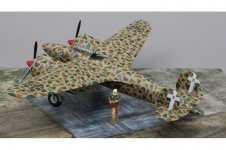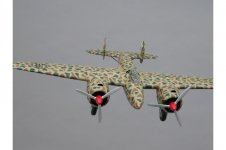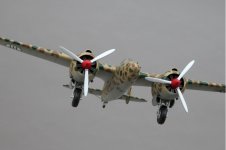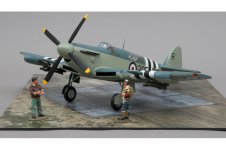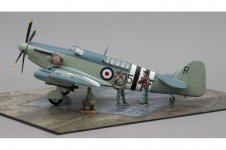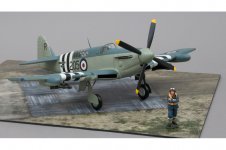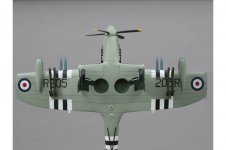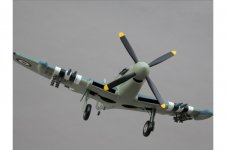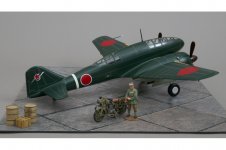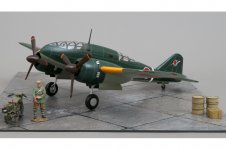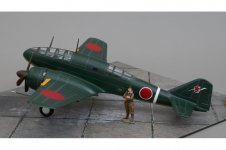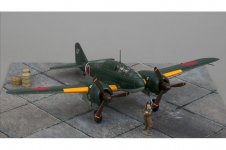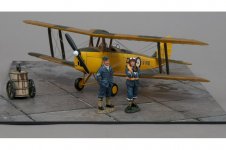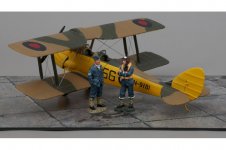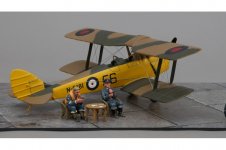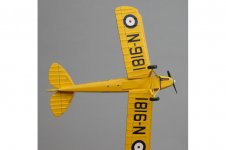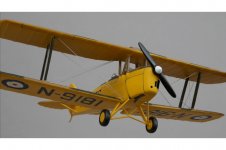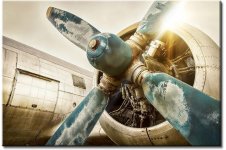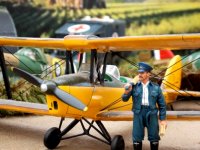Gunn Miniatures
Command Sergeant Major
- Joined
- Jun 18, 2009
- Messages
- 2,720
WOW494 F-104 Starfighter 'Luftwaffe'
The F-104 Starfighter had a revolutionary design, with short razor-sharp wings and was the first aircraft to be able to maintain Mach 2 not just in short bursts but during routine flying if required. Earning the plane the nickname "The Missile With A Man In It" it was used by over 15 countries and with over 2,500 built, the last F-104 Starfighter was decommissioned in Italy in 2004.
Designed in the 1950s in the aftermath of the Korean War, where fighters such as the F-86 were unable to claim or out manoeuvre the MIG-15. Lockheed proposed a new fighter meeting the needs of high speed, supersonic level flight, great range and the ability to climb to meet the threat of attacking Russian bombers and fighters. With the capability to carry a multitude of armament, which the Starfighter could, from an internal cannon , through to air to air missiles and nuclear ordinance delivery. The new wing design meant they were so thin, only 0.016 thin [0.41mm], the leading edges had to covered with felt strips to stop personal being injured during construction and maintenance. The USAF first took delivery of 258 Starfighters in 1958, the Starfighter was retired by the US Air National Guard in 1975.
Starfighters also served with a multitude of air forces around the world including Germany, Canada, Pakistan, Spain and Taiwan.
Our latest 1/30 scale F104 Starfighter represents one of the aircraft purchased by the Luftwaffe and flew with JG.32 'Bavaria' and is depicted as it would have appeared in 1983.
We have only 1 x 1/30 scale Starfighters available priced at $850 plus postage.
The TG accessories and KC figures are shown for scale comparison purposes only and are not included.
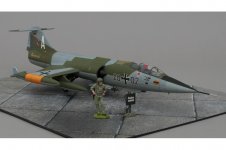
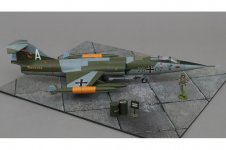
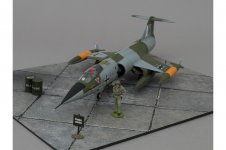
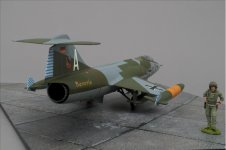
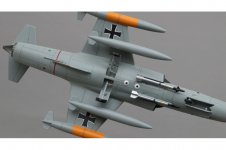
That's all for this month, we sincerely hope you enjoy the pictures and would love to hear from you if any of these magnificent models appeal to you. They are all now on our website www.tomgunn.co.uk and can be paid upfront or over an extended monthly period.
All Gunn Club members qualify for a 5% discount on the website listed price, joining is free so well worth registering.
Best wishes The Gunn Team
The F-104 Starfighter had a revolutionary design, with short razor-sharp wings and was the first aircraft to be able to maintain Mach 2 not just in short bursts but during routine flying if required. Earning the plane the nickname "The Missile With A Man In It" it was used by over 15 countries and with over 2,500 built, the last F-104 Starfighter was decommissioned in Italy in 2004.
Designed in the 1950s in the aftermath of the Korean War, where fighters such as the F-86 were unable to claim or out manoeuvre the MIG-15. Lockheed proposed a new fighter meeting the needs of high speed, supersonic level flight, great range and the ability to climb to meet the threat of attacking Russian bombers and fighters. With the capability to carry a multitude of armament, which the Starfighter could, from an internal cannon , through to air to air missiles and nuclear ordinance delivery. The new wing design meant they were so thin, only 0.016 thin [0.41mm], the leading edges had to covered with felt strips to stop personal being injured during construction and maintenance. The USAF first took delivery of 258 Starfighters in 1958, the Starfighter was retired by the US Air National Guard in 1975.
Starfighters also served with a multitude of air forces around the world including Germany, Canada, Pakistan, Spain and Taiwan.
Our latest 1/30 scale F104 Starfighter represents one of the aircraft purchased by the Luftwaffe and flew with JG.32 'Bavaria' and is depicted as it would have appeared in 1983.
We have only 1 x 1/30 scale Starfighters available priced at $850 plus postage.
The TG accessories and KC figures are shown for scale comparison purposes only and are not included.





That's all for this month, we sincerely hope you enjoy the pictures and would love to hear from you if any of these magnificent models appeal to you. They are all now on our website www.tomgunn.co.uk and can be paid upfront or over an extended monthly period.
All Gunn Club members qualify for a 5% discount on the website listed price, joining is free so well worth registering.
Best wishes The Gunn Team


